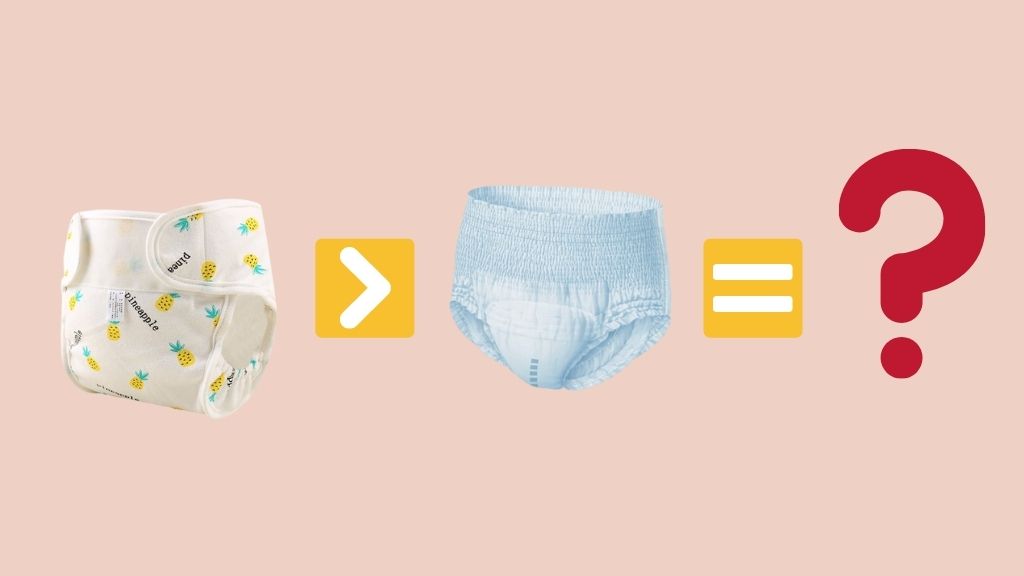
Table of Contents
Diapers are designed to be sustainable and eco-friendly all the while saving your money and keeping your baby dry and clean. Have you ever talked to a parent using cloth diapers for their babies? And did that leave you wondering how when they said, ” these are way easier than we thought!”? Here’s the answer: cloth diapers have come a long way from having been put together with safety pins. Let’s break down its basic anatomy to learn how cloth diapers work and how they have changed over the years.
Cloth Diapers: How Do They Work? The Breaking Down Of The Parts
1. Outer Shell
All cloth diapers have two parts: an absorbent inner lining and a waterproof outer shell. The absorbent part prevents moisture from sticking to your baby’s skin while the waterproof shell prevents that moisture from leaking onto your baby’s clothes.
2. Reusable Inserts
If you are using a pocket diaper then the insert is the absorbing part of the diaper. It is made of fleece, cotton, microfiber, or hemp, i.e., anything that is soft enough to absorb.
Approximate price: $14.99
3. Disposable Inserts
As the name suggests, disposable inserts are meant to be disposed of and help in the transitioning of disposable diapers to cloth diapers. To reduce the cleanup, you could place the disposable insert inside the lining of the diaper or on top of the pocket of a pocket diaper. It’s similar to how you would use a menstrual pad.
Approximate price: $14.99
4. Disposable Liners
Disposable liners are less substantial and thinner than disposal inserts. Their design does not absorb wetness but acts as a barrier between your baby’s diaper and solid waste. This helps you to clean up easily and quickly. Because disposable liners are thin, their cost is about ⅓ of what you would spend on a disposable insert. These can be used as wipes as well serving dual purposes.
Approximate price: $14.99
5. One-Size Diapers
One-size diapers are designed for newborn and potty-training babies which is why it is a huge money saver. This versatility is achieved with the help of adjustable leg elastics and extra side snaps.
Approximate price: $13.99
6. Leg Elastic
The leg elastics adjust like the bra straps so that you can make it bigger or smaller as per your baby’s growth. There are convenient markings that indicate the different sizes so you don’t have to make guesses that may be wrong. The leg elastic has a snug fit so that nothing can escape and as long as there are no red marks on your baby’s skin, you needn’t worry about it being too tight.
7. Side Snaps
Cloth diapers always have a ton of snaps on their sides. These snaps are supposed to adjust the width and length of the diaper so that it expands to a toddler size as well as shrinks to a newborn size with no extra parts.
8. All-In-One, Pocket, Fitted, And Prefold
There are different varieties of diapers available in the market for your baby. Here’s the basic rundown of all these diapers and what sets them apart.
Prefold Diapers
These are old-school diapers that have a fold-and-fasten technique. It is the most affordable of the bunch and comes in a steep learning curve. These can also be used as liners for fitted diapers.
Fitted Diapers
In fitted diapers, the shell and the lining are entirely separate elements. You can fold and place a piece of absorbent cloth inside the shell and your diaper is ready to be worn.
Pocket Diapers
Pocket diapers are almost like disposable diapers with a pocket that can be filled with reusable inserts for extra absorbency.
All-In-One Diapers
All-in-one diapers are also similar to disposable diapers except for the reusing and the washing part. Its lining and shell are together as one part.
Accessories You Might Want With The Diapers
You do not need all the diaper accessories under the sun but some might come in handy to make your job easier. Here are some of these accessories that cloth diapering parents can’t live without:
1. Wet Bag
A wet bag is for keeping all your dirty diapers when you are out and about. A wet bag will allow you to separate soiled diapers from the rest of your belongings until you find a place to dispose of them safely.
2. Diaper Sprayer
Breastfeeding babies’ poop is water-soluble and can go straight into the washer. But once your baby feeds on solid food or formula you might want some extra help to remove the solid waste. While “dunk and swish” is a true and tried method, a diaper sprayer will help you to avoid getting your hands wet.
3. Splatter Shield
If you are choosing a diaper sprayer then a splatter shield must also be on your list. It will keep the water and the solid waste from splashing onto your bathroom floor or on you.
4. Spatula
You must definitely have used a spatula before but none like this. A silicone spatula exactly like the one you would use while baking is often used to remove solid waste if a gentle shake proves to be not enough.
The Bottom Line
Cloth diapering has become way easier than it was before but only you know what is right for your family. There are plenty of parents who use cloth diapers and disposable diapers alternatively or together in a hybrid system. You could first gather information about all the diapers and their accessories available and then form your own diaper kit.









